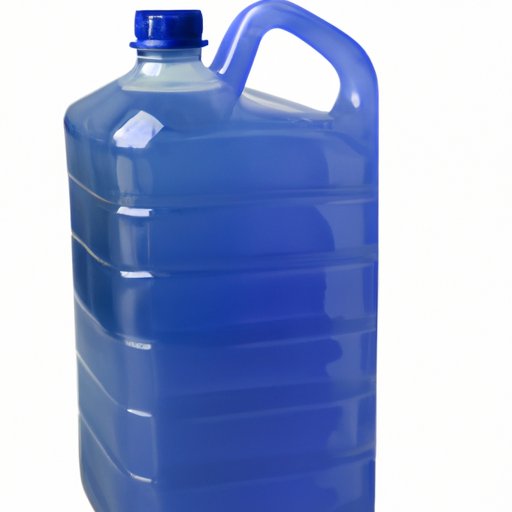I. Introduction
Have you ever found it challenging to convert pounds to gallons, especially when measuring liquids? The truth is, the relationship between pounds and gallons can be confusing, especially when measuring different types of liquids with varying densities. In this article, we will explore the conversion of pounds to gallons, discuss how to calculate it, and provide examples of common household liquids and how to convert them. By the end of this guide, you’ll have a better understanding of how many pounds are in a gallon and how to measure liquids with ease.
II. Understanding the Relationship Between Pounds and Gallons
Before we dive into the conversion process, let’s define what a gallon and a pound are, and how they are related. A gallon is a unit of measurement for liquid capacity in both the US and the UK. In contrast, a pound is used as a unit of weight in the US and globally. Even though these two units of measurements measure entirely different things, they are related when measuring liquids.
III. Measuring Liquids: How Many Pounds Are in a Gallon?
Measuring liquids can be confusing, and converting pounds to gallons can be even more complicated. The density of liquid affects the conversion of pounds to gallons. The conversion formula differs for liquids with different densities, and some common liquids and their densities include:
- Water – 8.35 pounds per gallon
- Milk – 8.6 pounds per gallon
- Corn syrup – 11.63 pounds per gallon
- Olive oil – 7.6 pounds per gallon
To convert pounds to gallons, use the following formula:
(Number of Pounds) / (Liquid Density in Pounds per Gallon) = Number of Gallons
For example, suppose you want to convert 20 pounds of water to gallons. Using the formula, you would divide 20 by 8.35 and get 2.4 gallons.
IV. How to Calculate Pounds to Gallons
The process of converting pounds to gallons is relatively simple when you know the density of the liquid you are measuring. Here are the steps to follow:
- Identify the density of the liquid in pounds per gallon and write it down.
- Take the number of pounds you want to convert and divide it by the density in pounds per gallon.
- The answer is the number of gallons you have.
For example, let’s say you have 50 pounds of corn syrup. To convert to gallons, you would divide it by the density of corn syrup, which is 11.63 pounds per gallon. The answer would be 4.30 gallons.
V. A Quick Guide to Converting Pounds to Gallons for Common Household Liquids
The following table provides conversion factors for some common household liquids:
| Liquid | Conversion Factor |
|---|---|
| Water | 8.35 |
| Milk | 8.6 |
| Vegetable Oil | 7.6 |
| Corn Syrup | 11.63 |
To use the table, take the number of pounds of liquid you have and multiply it by the conversion factor for that liquid. The resulting number is the number of gallons you have.
For example, if you have 15 pounds of vegetable oil, you would multiply it by the conversion factor of 7.6, which would give you 1.97 gallons.
VI. How to Convert Pounds to Gallons for Various Liquids and Applications
It’s essential to note that not all liquids have the same density, meaning that the conversion factor will vary from one liquid to another. Some common liquids and their corresponding conversion factors include:
- Olive oil – 7.6 pounds per gallon
- Gasoline – 6.073 pounds per gallon
- Isopropyl alcohol – 6.583 pounds per gallon
- Bleach – 10.65 pounds per gallon
Knowing how to convert pounds to gallons will come in handy in different applications such as cooking, filling a tank, or measuring liquids for experiments. To convert pounds to gallons for different liquids and applications, follow the formula we discussed earlier.
VII. Conclusion
Measuring liquids can be challenging, especially when trying to convert pounds to gallons. In this guide, we’ve learned the basics of how pounds and gallons are related, how to calculate pounds to gallons, and provided a quick guide to common household liquids’ conversion factors. We’ve also covered how to convert pounds to gallons for various liquids and applications. Now, you can confidently measure liquids and convert pounds to gallons. For any questions, tips, or suggestions, feel free to share in the comments section below.
